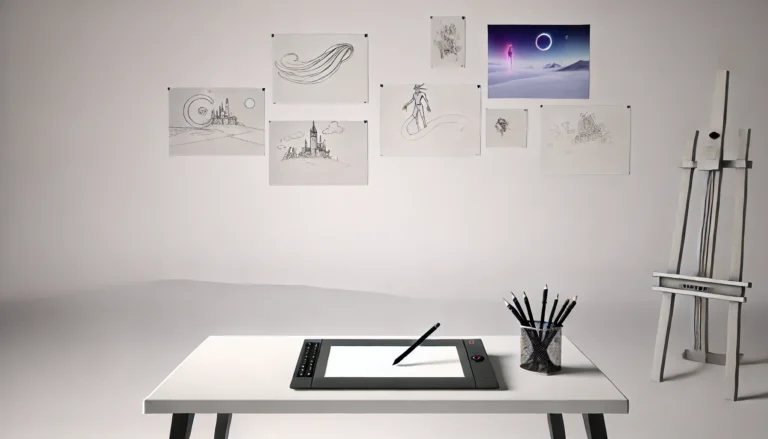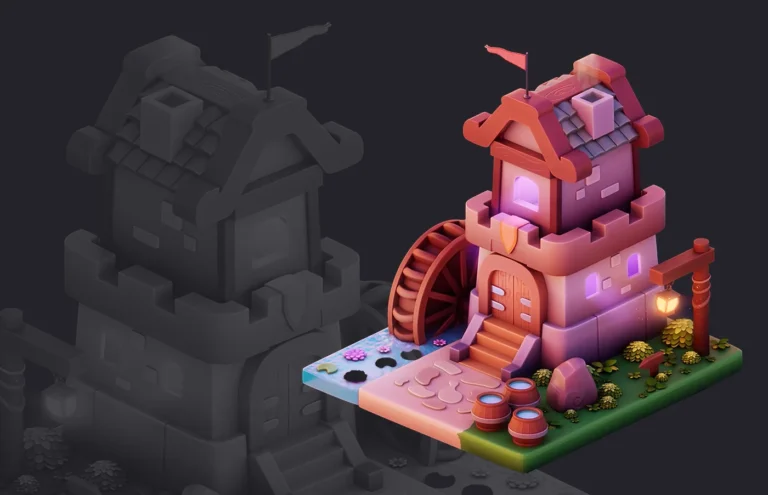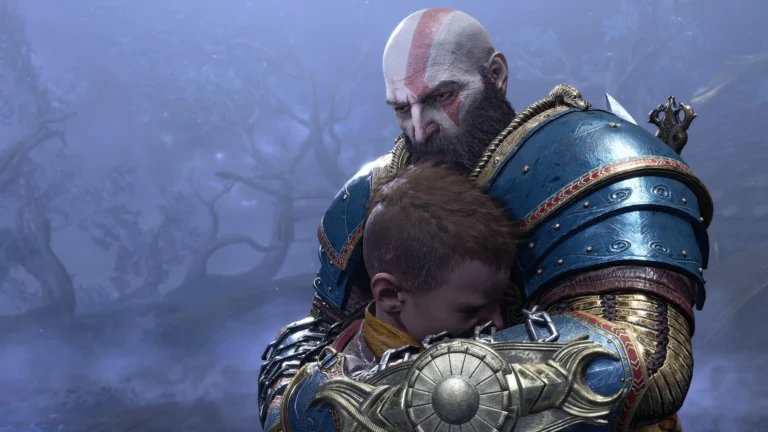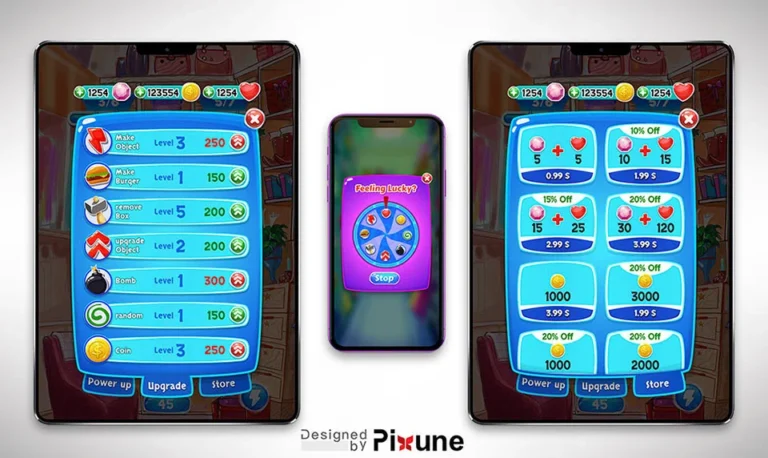Bringing a video game to life demands a complex alchemy – melding creative vision, cutting-edge tech, meticulous project execution, and that spark of marketable intrigue that lures audiences to devote precious free time and hard-earned dollars. Though each studio follows its own game design process, generally key phases emerge on these ambitious journeys which transform initial brainstorms into shipped products stirring hearts and minds.
This piece will explore essential waystations nearly all game creators navigate from blank page dreams to final launched masterworks. We will experience the spark igniting creative concepts, processes carefully honing core ideas through documentation, pre-production procedures mitigating downstream risks, environment and system construction bringing virtual realms to life, quality assurance efforts, final crunch time finesse, and post-launch support keeping audiences engaged. For hopeful designers or merely the creatively curious, let’s peek behind the development curtain!
Igniting Game Concepts: Envisioning Compelling Experiences
Hit video games grip our imaginations, allowing us to traverse wondrous lands, outwit cunning foes, or construct civilizations spanning virtual ages. But these journeys begin long before a single 3D model gets built or a line of code gets written. Like any art form, the blank page looms. So how do creators discover the catalyst to forge player-pleasing innovations rather than lackluster retreads?
In my dozens of spirited whiteboard debriefs and sticky note ideation workshops as a game designer, we often feel pressure inventing that lightning-in-a-bottle “hook” which confidently signals “this one is special”. Yet chasing pure novelty frequently leads us astray. Instead, recall why you personally enjoy games. Identify emotional touchpoints currently underserved in market offerings through user studies and focus group discussions. Fill gaps rather than forcing reinvention simply to stand out.
For example, survival horror fans lamented increasingly bombastic Hollywood set-pieces overwhelming atmosphere, and isolation in flagship franchises. This longing for unrestrained dread catalyzed the 2017 breakout hit Resident Evil 7 – a deliberate throwback reinvigorating innate yet neglected genre strengths.
In summary, worry less about overturning every assumption or mechanics list too avant-garde for outsiders to instantly appreciate. Start by truly knowing your player; magic flows from there.
Cultivating Core Concepts
With sound product vision principles in hand guiding our explorations toward emotionally compelling spaces, we next enter the “blue sky” conceptualization phases. Game ideas range from adapting beloved film IP into interactive adventures, conveying deeply personal stories through avant-garde mechanics, or simply merging popular gameplay formats into fresh hybrids.
But even with seemingly boundless creative inputs to draw upon in these early thought exercises, veteran designers primarily fixate upon three key pillars when evaluating proposals and honing the most promising seeds of inspiration into fleshed-out design documents:
Market Considerations
Will players realistically invest time and money into the presented concept? Analyze target demographics, likely pricing thresholds, monetization strategies, and platform ecosystems in your category.
Practical Implementation Factors
Do the technological assets, team skills, project timeline, and key performance indicators credibly support envisioned feature sets? Scope creep destroys budgets.
The High Concept “Hook”
Can the core idea compellingly communicate itself in a brief elevator pitch? If crucial elements sound convoluted during quick pitch sessions, what changes simplify while preserving novelty?
With the above frameworks filtering an untamed idea multiverse, the conceptualization period’s ultimate goal is settling upon definable project pursuits that balance innovation with mitigating foreseeable production risks.
Pre-Production: Establishing Solid Foundations
With imaginative conceptualization brainstorms yielding a handful of viable game candidates, teams enter the meticulous “pre-production” phase, transmuting ideas into executable designs. Without proper scoping and planning, even brilliant notions floundering in ambiguity can spell downstream development risks once large teams dedicate scarce resources.
Therefore, this stage focuses on concrete scoping, documentation, pipeline analysis, and capability planning to establish informational guardrails helping producers mitigate vagueness drag:
Feature Scoping and Requirements Gathering
High-level gameplay systems, central mechanics, environment and level breadth, assets list projections, technological integrations, and quality assurance metrics. Teams hammer out intricate design specs, grasping at lofty visions while grounding proposals with pragmatic constraints. Countless Google doc pitches seek answers to that eternal question–what is fun?
Art Bible and Style Guide Formation
Define visual identity, branding consistency, artistic ground rules, example asset sets illustrating fidelity targets covering characters, architectures, lighting approaches, etc. Concept artists set color palettes, modelers establish topological standards, and animators block key movement sets. Future production consistency necessitates present-day unity.
Pipeline Analysis and Tools Evaluation
Engine limitations? Animation workflow gaps? Assess technical bandwidths supporting asset build & integration needs plus post-launch content creation. If conceptualizing asks “What experiences do we want to create?” pipeline planning answers “and how will we build this at scale?” Prototyping tests asset complexity limits. Budget major tech transitions before committing.
Prototyping Exploration
Code tests proving design pillar feasibilities, aesthetic explorations, and UI complexity validation studies. Fail fast saving heartache later! Rough gameplay dynamics in simple field simulations. Detailed financial models predicting team burn rates and budget needs based on scope. No area remains fuzzy, everything is touched by diligence.
Level and Environment Design: Two Sides of the Same Coin
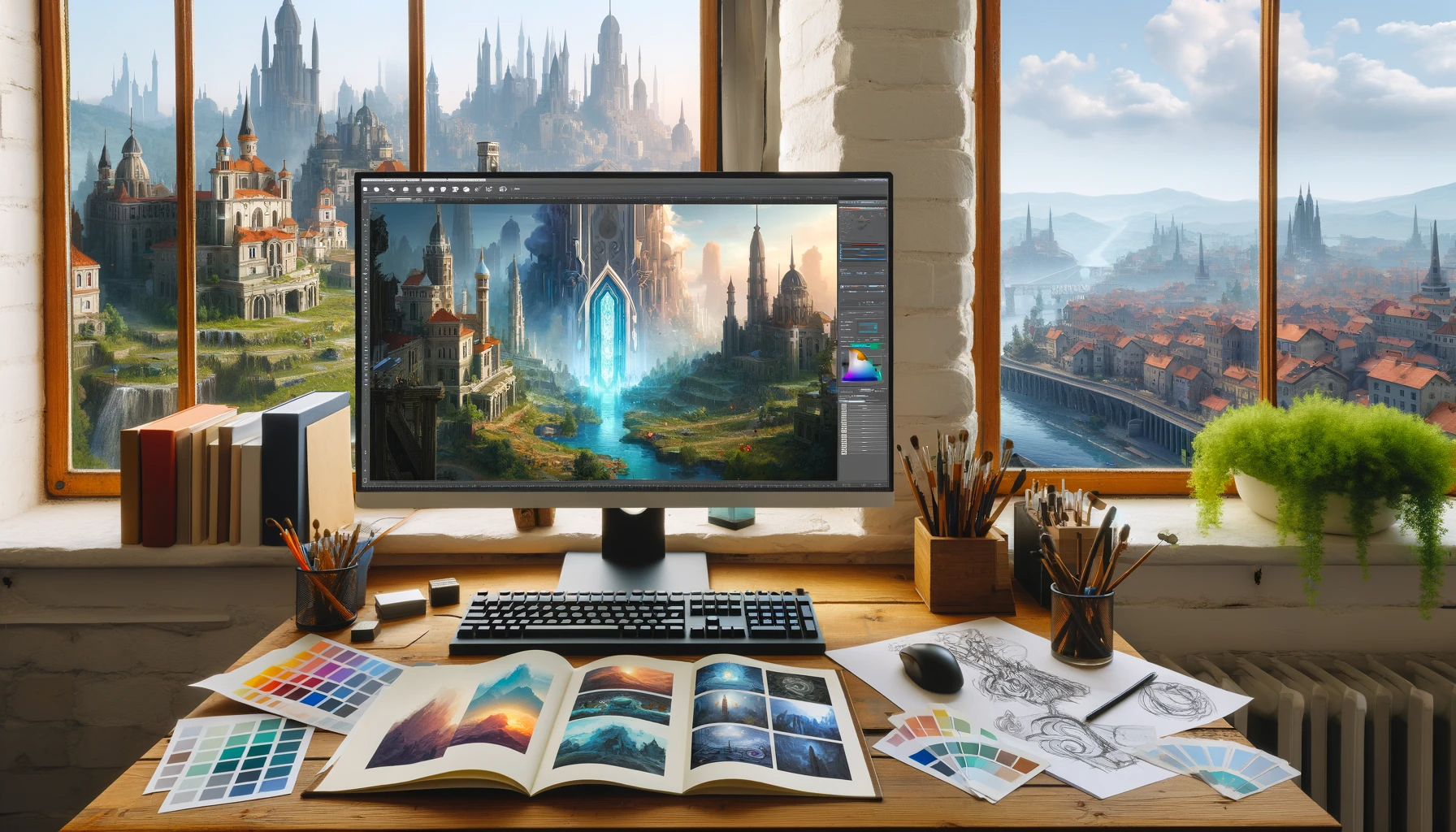
Before going on any further, let us discuss the difference between level and environment design, as it can be confusing sometimes. The confusion comes as no surprise since both level and environment design are intertwined disciplines.
Definition of Level Design
While narratives may explore vast galaxies, gameplay happens on much more intimate scales – single rooms, compact hub towns, and confined corridors. Level designers architect the game’s spatial gameplay canvas, carefully positioning interactive elements and plotting movement ranges ensuring players clearly understand their immediate options. They establish space to encourage certain experiences – claustrophobic tension, multi-layered infiltration routes, grand vistas displaying epic breadth. Level design is micro-scale architecture in service of desired emotions.
Definition of Environment Design
If levels provide underlying spatial gameplay choreography, environmental artists adorn these foundations transforming sterile backdrops into believable, visually compelling realms. From assets like subtle graffiti markings and scattered trash implying societal conditions to wall textures with tangible age-worn into brick mortar over the years, environmental art dresses essential skeletons with layers of lifelike details. Light and shadow further enhance mood and realism. The world feels broken-in, lived-in. Players believe because creators believe.
Key Considerations In Both Level and Environment Design
With core gameplay frameworks, visual style, and technical direction set through diligent upfront shaping, attention shifts toward sculpting intricately purposeful spaces for players to traverse. Much like savvy city planners balancing pedestrian foot traffic flows, retail density, and picturesque sightlines, talented level designers must weave together spatial functionality supporting various gameplay ingredients while establishing believable spaces retaining their own identity and history. Let’s explore key considerations when crafting vibrant game worlds!
If you want to find out more about the intricate details of crafting great levels and environments, please refer to our article on challenges of designing game environments.
Supporting Core Mechanics
Ensure layouts directly facilitate required player interactions and system interdependencies. For example, a stealth title relies on clear navigation options, hiding spots randomly scattered across various heights, and shadowy pockets amidst broad-lit regions. Analyze mechanical and narrative beats needing environmental representation.

Guiding Players Intuitively
Well-telegraphed region divisions, visual hierarchies focusing attention, landmarks and other navigation aids, color/lighting languages indicating interactive elements. Subtly usher players without confusing or distracting them.
Environmental Storytelling
Surroundings strongly impact our emotional states. What details like props, artifact placements, architecture, and decay patterns bring spaces to life while indirectly revealing backstories? Show don’t tell.
Mood, Pacing, and Gameplay Variance
Bleak districts thirsting for hope, neon-bathed cybernetic nightlife, ancient civilizations still not alone. Different levels set distinct tones through art direction, sound, and lighting approaches. Pace tense periods against free exploration. Let some areas favor certain mechanics. Give space and room to breathe.
System Design: Interlocking Gameplay Ingredients into Cohesive Experiences
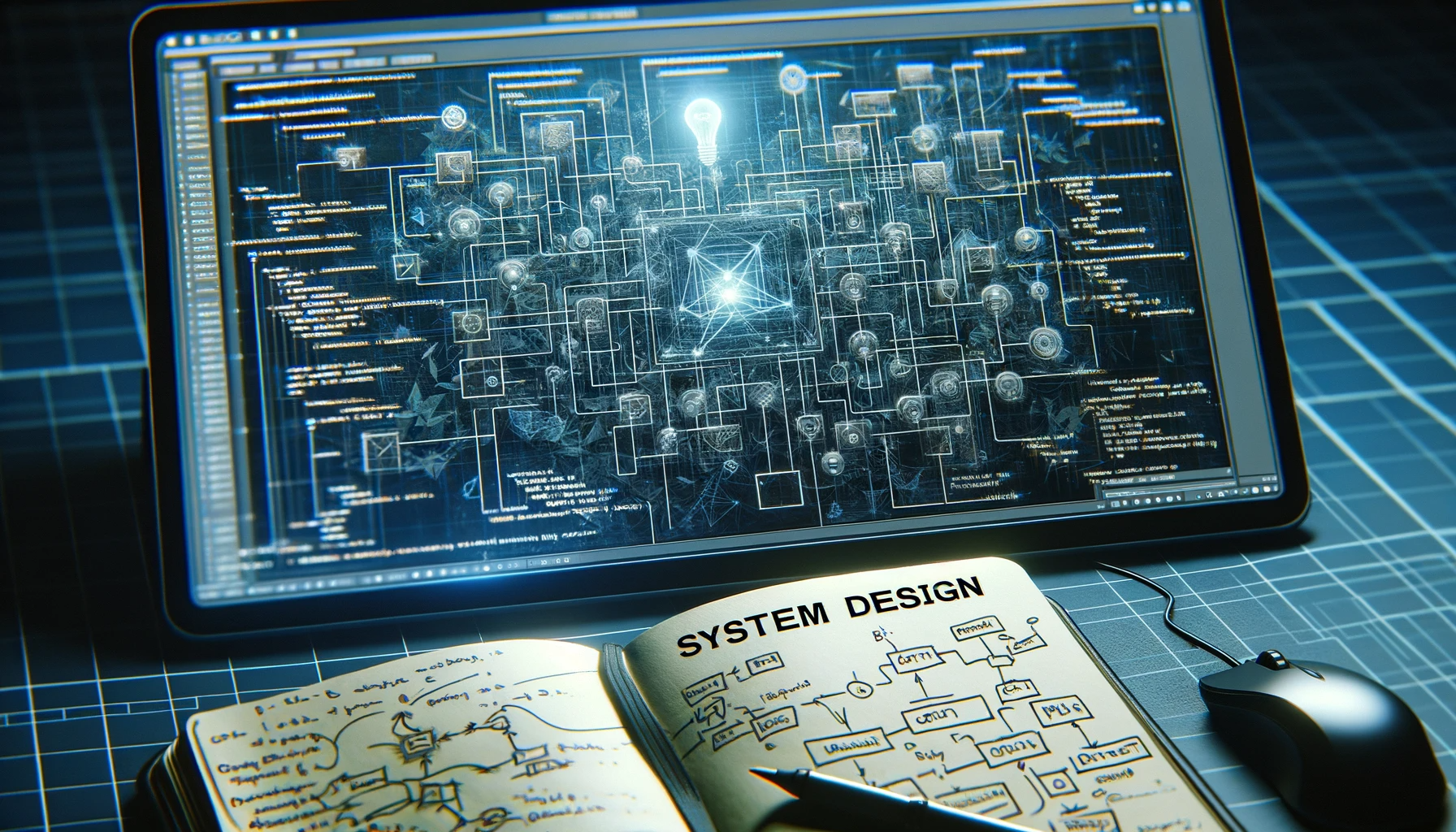
What captivates players during those magical sessions where hours vanish in frenetic button mashes or hushed engrossed decision trees? Certainly, impressive visuals, atmospheric spaces, and novel settings provide key environmental ingredients. However, at their cores, games are fundamentally systems of interconnected gameplay variables, rules, and underlying mathematical relationships guiding our journeys.
Thus, meticulous system design providing engaging yet balanced underlying mechanical frameworks proves absolutely vital. So what key considerations help designers carefully calibrate symbiotic ingredients yielding delightful alchemical reactions rather than muddy soups of mismatched spices that look pretty but offer little sustenance? Let’s review some system design commandments when seeking that sweet spot between depth and accessibility!
Defining Core Gameplay Loops
What one or two-minute micro-scenarios best characterize the desired experience? Quick scavenging runs through procedurally generated spaces before frenzied evacuations in survival horror titles? Tuning vehicle performance and then testing track times in racing sims? Outwitting smarter enemies by chaining abilities in real-time action RPGs? Identify fundamental gameplay cycles, polish their connections, and then usefully complicate them.
Establishing Variable Interdependencies
Isolated variables quickly lose their luster. However, interlocking progression drives engagement – abilities expanding locomotion options accessing previously unreachable loot spawning tougher enemies requiring crafting system outputs to defeat. Chain underlying statistics, resources, and progression gates. Deeply entwine.
Tuning for Balance
An amazing dish isn’t about individual ingredients but how they complement each other. Similarly, balance gameplay elements so no one system invalidates another, especially late-game. Carefully adjust weapon strengths against different enemy types on harder difficult settings for example. Do talisman buff durations scale reasonably as confrontation complexity increases?
Playtesting, Playtesting, and Then More Playtesting!
Yes, I said it three times to emphasize its importance. No spreadsheet model predicts how systems coalesce within actual human hands. Recruit institutionalized quality assurance teams, conduct public beta periods, and watch Twitch streams. Uncommented gameplay truth emerges from the battlefield. List player grievances, address legitimate criticisms, and stand firm if designers’ intent remains but communication proves poor. Systems evolve through iterative feedback.
These considerations guided some of the most revered gameplay engines – from Civilization masterfully chaining technology tree interdependencies to Mario’s synergy between environments and locomotive prowess. Remember, well-designed gameplay systems not only provide self-sustaining experiences during individual sessions but also nourish series longevity across successive titles as developers expand and interlink frameworks. It all starts from carefully tuned cores!
Production: Constructing the Virtual World
With gameplay visions clarified and technical foundations solidified during preparatory ideation and pre-production, the most labor-intensive challenge begins – transforming designs into tangible, polished gameplay sequences ready for audience enjoyment. Core production involves heavy lifting across engineering, art, animation, audio, quality assurance, and other disciplines to construct living virtual worlds from scratch.
Though each group focuses on immediate assigned deliverables, good producers proactively ensure cross-departmental unity of vision and pacing. After all, a shipped game is only as strong as its weakest link. Production phase productivity often single-handedly determines project timelines, budget overruns, and final quality bars clearing launch hurdles. What overarching project management considerations help productions effectively scale into well-oiled machines constructively chugging towards timely completion?
Let’s review some key directives:
Pipeline Implementation and Workflow Optimization
Transitioning prototypes into final sustainable tools supporting asset integration, testing, and deployment at scale remains pivotal. Build iteration cycles allowing creators to quickly see work in-game, soliciting constant feedback driving refinements until excellence emerges. Provide animators with necessary exporter plugins formatted for target game engines.
Construct streamlined but stringent reviewer feedback loops to catch issues early. Analyze interdisciplinary dependencies, strategically sequence tasks, and establish reasonable production cadences. Map bandwidth availability across groups during peak periods when the entire studio operates in overdrive towards immutable milestones. Define buffer periods accounting for the unplannable.
Cross-Departmental Communication Structures
Clarify who needs what from whom by target dates through daily standups, asset version handoff protocols, centralized documentation hubs, demos, etc. Convene groups around well-defined sprints, reviewing progress and ensuring continued alignment. Make coordination and transparency of production’s metronome keeping teams in sync.
Morale Maintenance
Grueling nights, demanding expectations, and endless iterations strain even the most seasoned crews. Maintain spirits through proactive leadership transparency regarding evolving wins, setbacks, and changing priorities. Celebrate major milestones, consistently voice appreciation for individual contributions, and inject workplace levity wherever possible. Production’s ultimate fuel remains committed teams collectively pushing towards the finish lines. The producer’s central mandate involves rallying those troops forward come hell or high water!
Executing Contingency Plans
Despite herculean efforts, unforeseen complications inevitably emerge – abrupt publisher priority shifts, key talent losses, and technological blockers. However methodical production planning girds teams to nimbly confront obstacles through focused triage and adjusted roadmaps rather than complete breakdowns. Even impeccable design documents never account for every eventuality.
Adhering to the above best practices won’t guarantee smooth journeys. But they do empower creators to achieve the improbable. The pieces slowly coalesce until…magic! But further uphill battles loom even after content completion. Testing and quality assurance efforts must validate experiences before product launches.
Post-Production: Launching and Beyond
After countless all-nighters and review cycles, the finish line finally appears – masters are pressed, packages shipped, and servers prepped. But a project’s responsibilities don’t conclude upon launch day. In many ways, the real work now begins. How do developers smoothly transition to meeting player expectations in the wild? Let’s review key post-production directives to stick the landing and nurture ongoing community engagement:
Monitoring Launch Activities
Establish day-one situation rooms staffed by lead engineers, producers, and community managers to swiftly address server loads, stability issues, or critical game-breaking bugs slipping through QA. Is no war room needed? Don’t celebrate yet. Maintain vigilance ensuring smooth early access experiences coloring hugely influential first impressions
Community Management
Shape consistent studio-player communication channels like forums, issue trackers, and social accounts allowing user feedback to constructively inform ongoing support priorities. Monitor watchpoints like Reddit or Steam reviews flagging widespread complaints. Communicate launch state assessments and next-step commitments. Players want openness, not silence.
Tracking Performance Metrics
Beyond anecdotal observations, continuously compile qualitative KPIs from usage telemetry – most played levels and classes, achievement completion rates, and churn points. This data fuels data-driven decisions on rebalancing priorities, future content pipelines, and monetization effectiveness. numbers convey truths budgets don’t allow for.
Post-Launch Roadmap Execution
Prepare major patches, expansion packs, and live events based on roadmap commitments. Schedule interim content drops sustaining engagement like new character skins or multiplayer maps. Seed long-term hooks for invested communities. Avoid content gaps leaving only memories of launch fireworks.
Ongoing Support Staffing
Dedicate specialized teams like engineers and community liaisons during post-launch phases rather than mass layoffs. Support extends for months or years in modern gaming. Especially crucial for “games as service” models requiring indefinite operation like MMOs and live-service multiplayer titles.
In summary, launches signify beginnings rather than endings of player journeys. With credits long rolled, development teams bear great responsibility for crafting initial experiences inevitably framing long-term perceptions. There exists no greater privilege than sharing our creative works with the world. We earn devoted audiences not through marketing, but through consistently delivered quality long after launch day festivities subside.
Conclusion: Bringing Visions to Life
As any seasoned developer can attest, bringing a game from conceptual spark to shipped product is a monumental undertaking, requiring extensive planning, communication, and passion to overcome interactive entertainment’s inherent complexities. While each studio approaches this journey in its own style, a meticulous process blended with human creativity remains essential for manifesting once impossible-seeming visions into living experiences enjoyed by millions.
Yet even armed with the soundest understanding of the development process, fresh creative voices may still desire trusted partners providing consultation or production assistance during their maiden voyages. If looking to bring your own innovative gaming visions to life, consider reaching out for additional support. Experienced studios like Pixune Studios offer game art services empowering independent creators to fully realize their interactive dreams without navigating alone. The journey forever proves more fulfilling when shared. Partners providing knowledge or resources can illuminate the path for first-time game developers when needed most.






